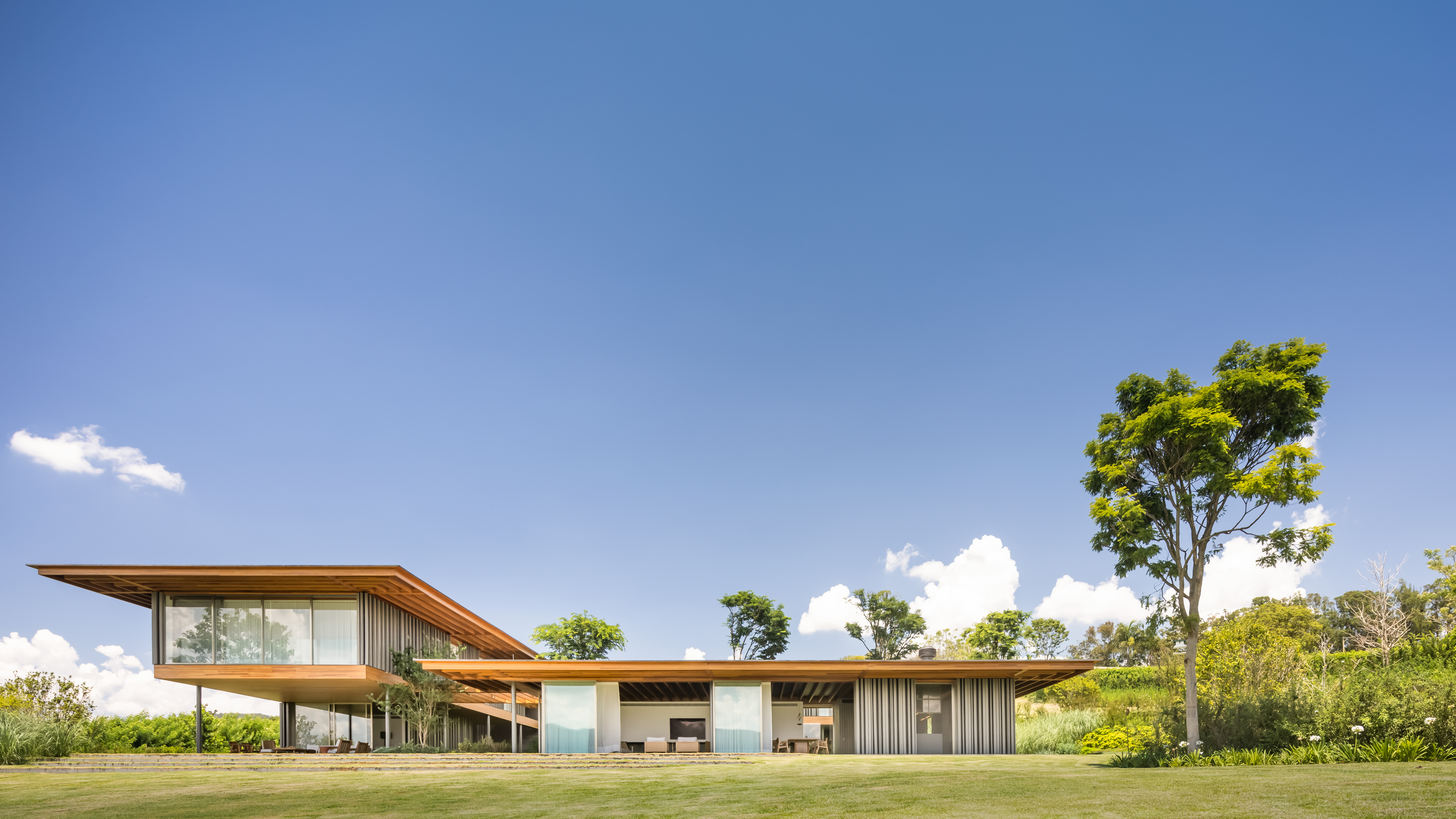
YJD house
Piracaia, São Paulo, Brasil

FACTS
- Total area
- 15.615 m²
- Built area
- 2.362 m²
- conclusion
- 2021
PROJECT
- Architecture
- Jacobsen Arquitetura
- Architecture Team
- Paulo Jacobsen, Bernardo Jacobsen, Edgar Murata, Marcelo Vessoni, Marcela Siniauskas, Marcela Guerreiro, Pedro Henrique Ramos, Fernanda Maeda, Alan Cruciti, Gustavo Borges, Maria Carporale, Paula Miele, Daniel Arce, Ananda Nunes, Camila Jungman, Amanda Leal
- Interior Design
- Marina Linhares
- Landscape design
- Rodrigo Oliveira
- Lighting design
- Lightworks
- Construction Company
- Lock
- Photos
- Fernando Guerra
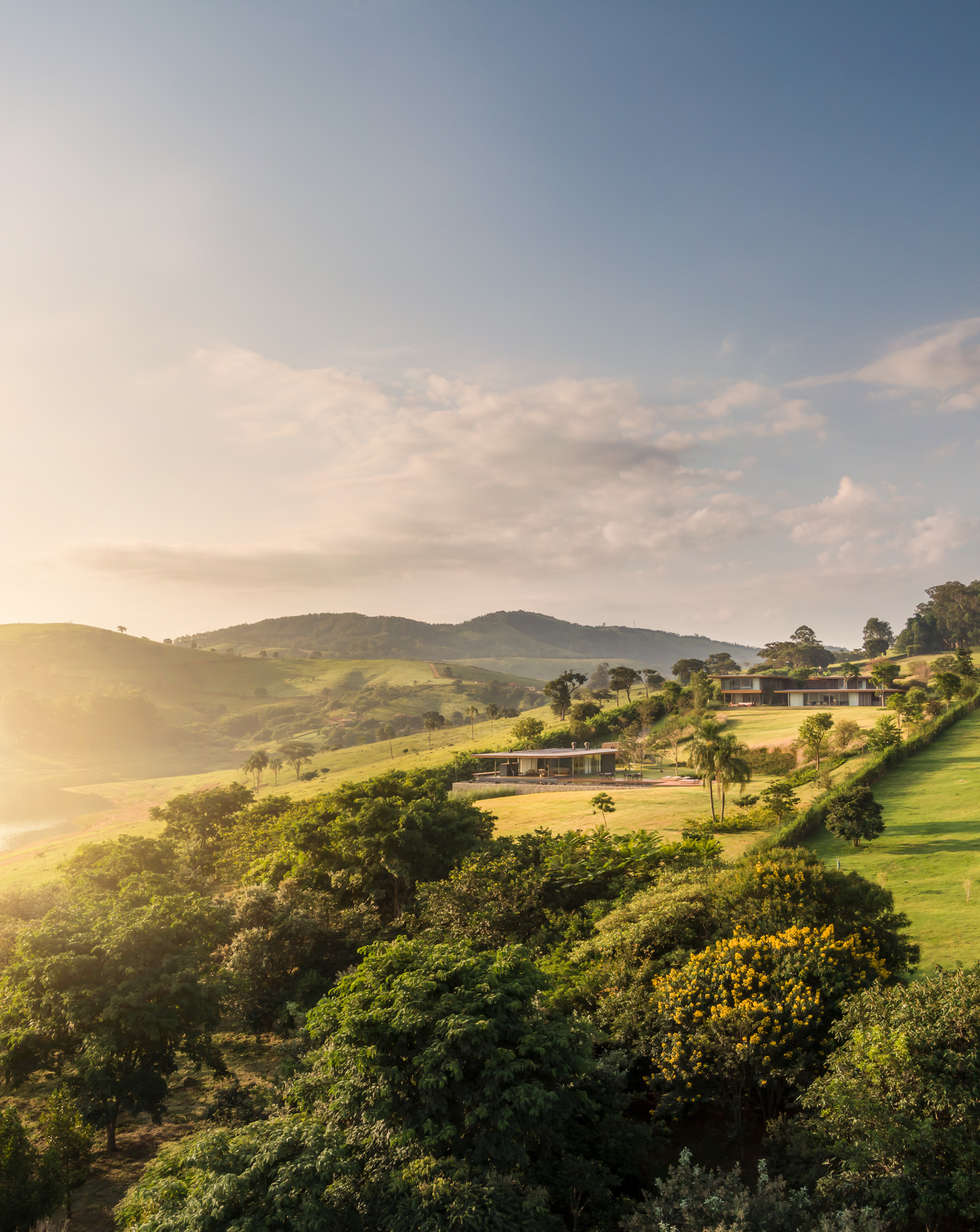

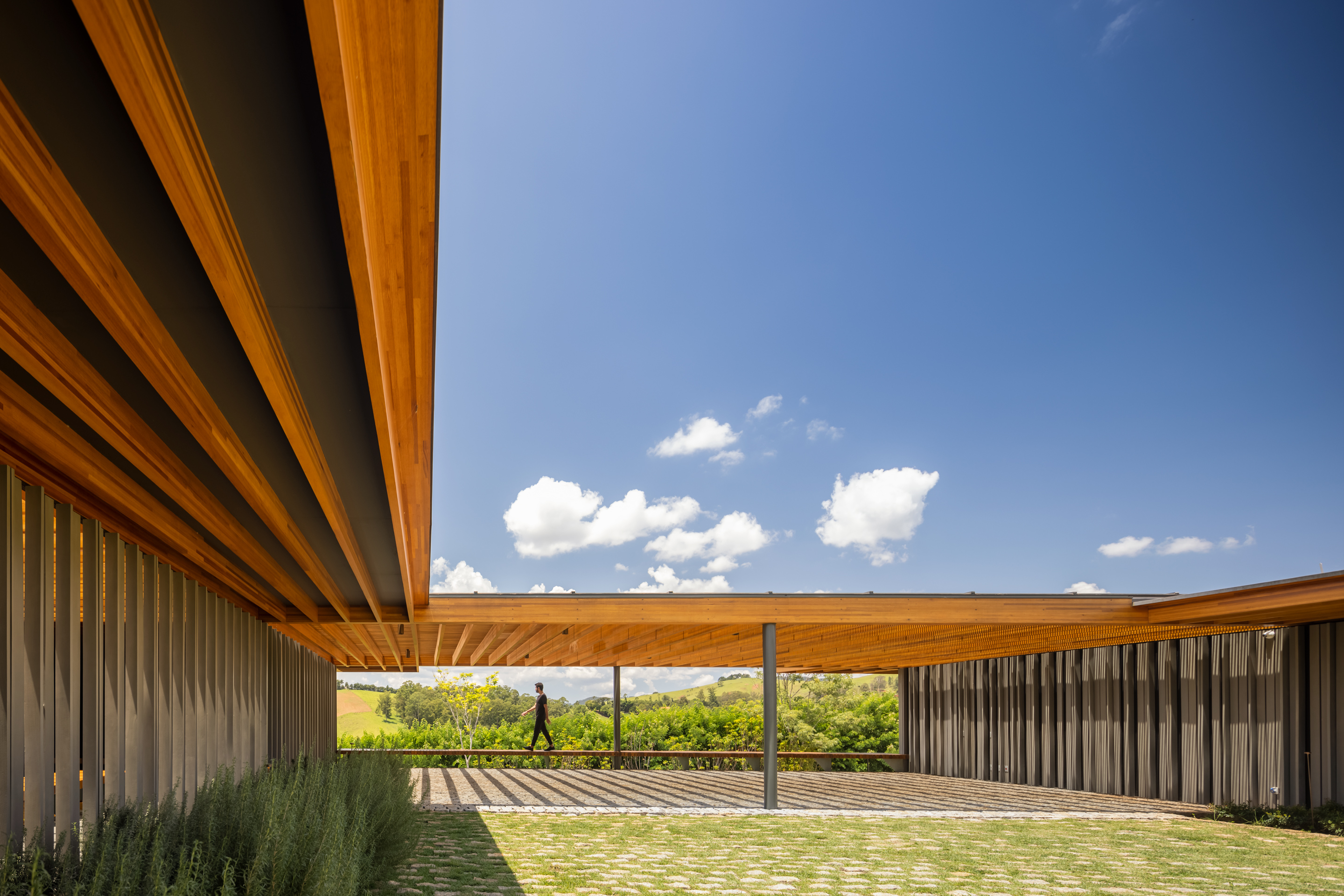
The YJD House is a country house located next to a dam, in the countryside of São Paulo. Based on the clients’ premises, we chose to divide the program into two volumes: the main house and the annex. The land had a continuous slope, so we decided to place the main house on the highest level, unlike to what they usually do there. From this spot, it is possible to have a more comprehensive overview of the entire surroundings, in addition to have a construction detached from its neighbors.
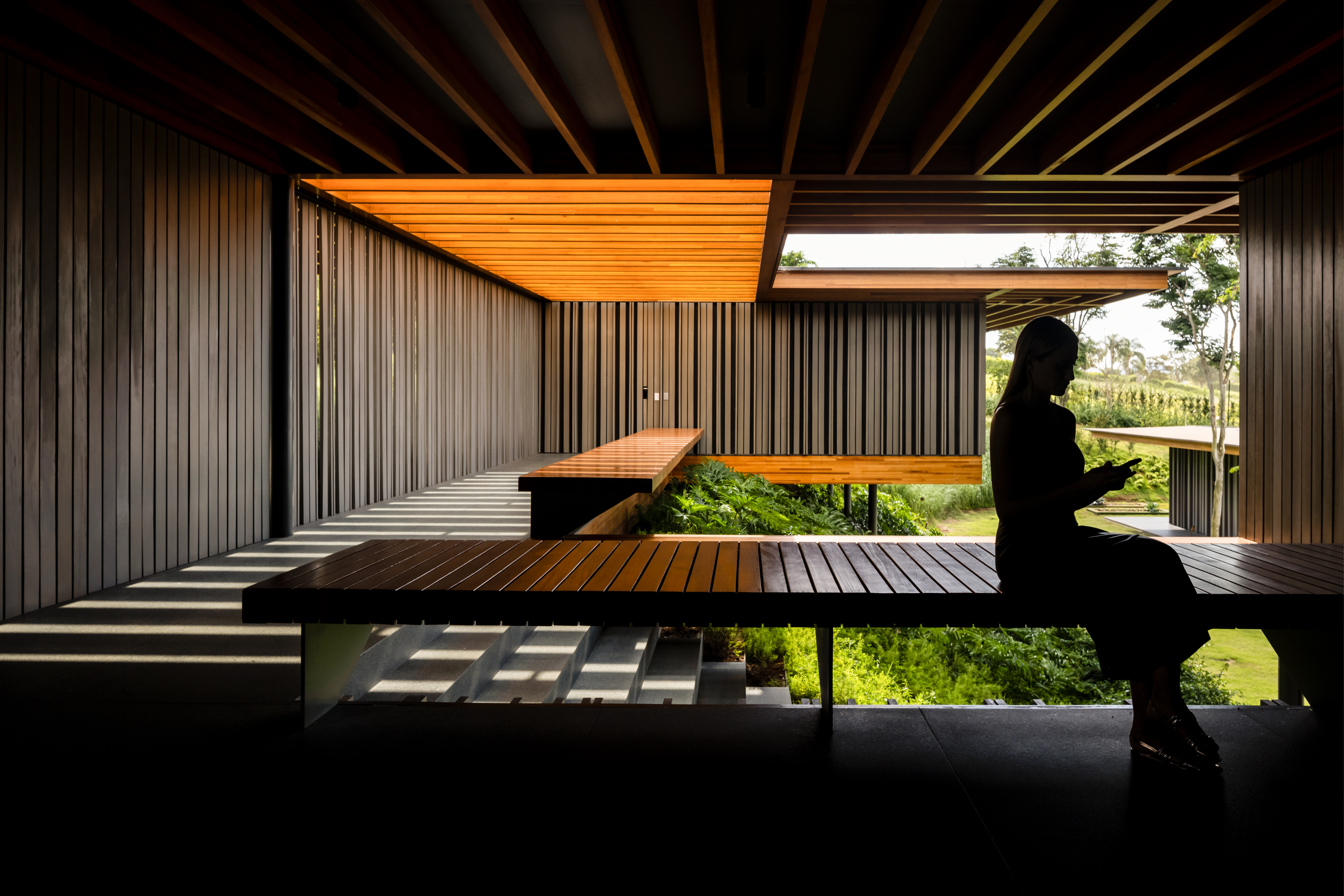
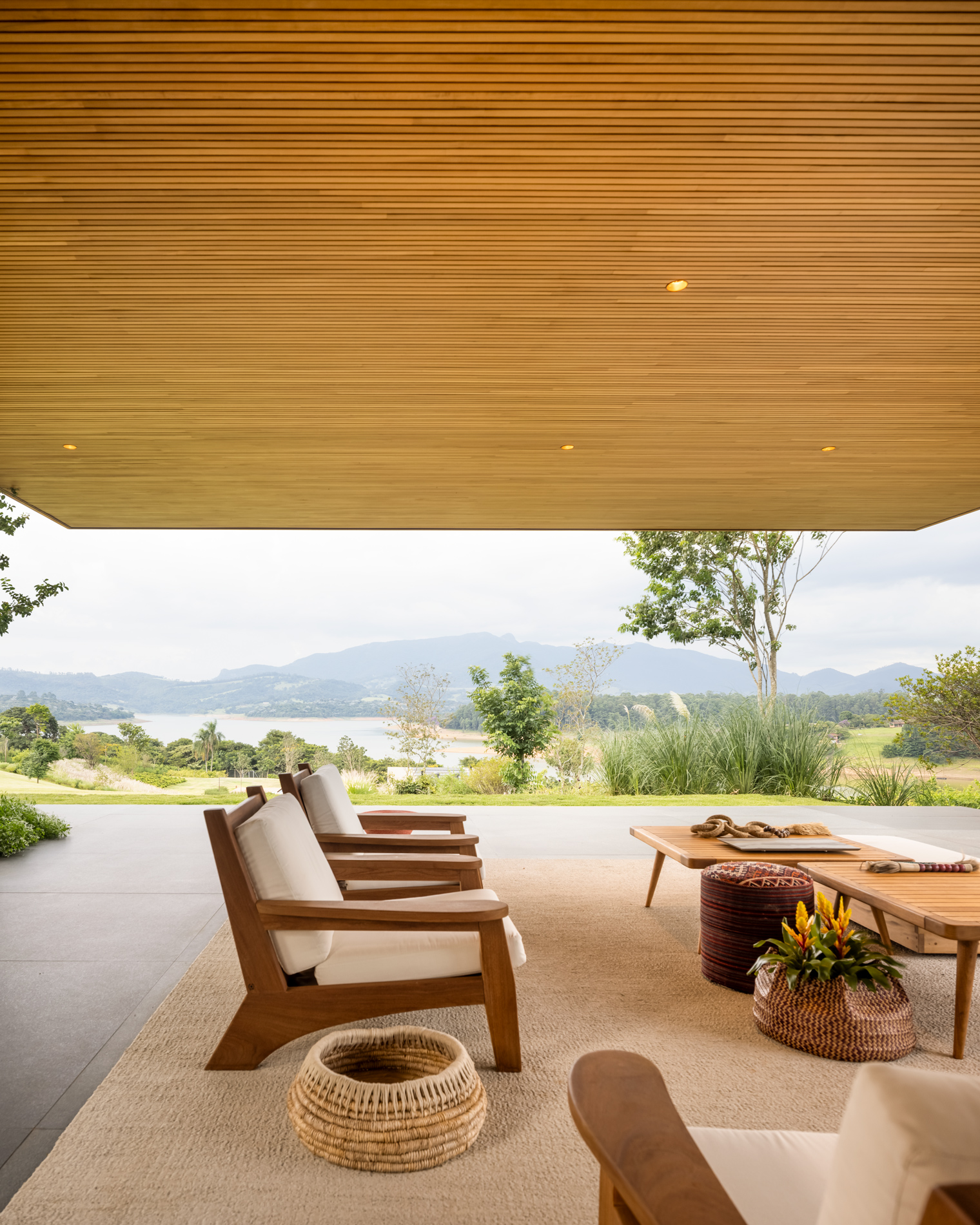
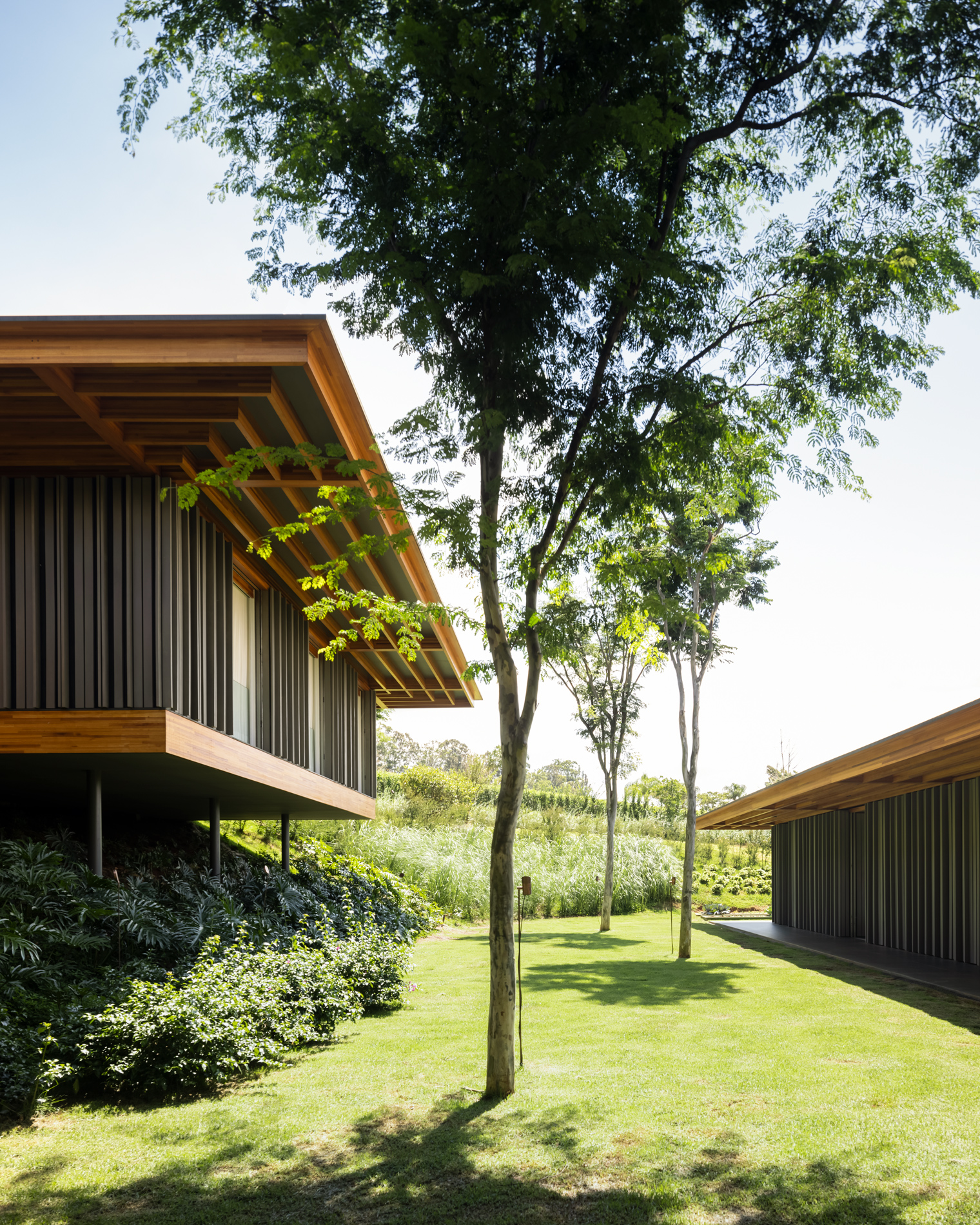
Viewed from above, the main house seems to be composed by three independent roofs, but they are connected by covered walkways. This arrangement in pavilions creates a certain fragmentation in the architecture, making it lighter and less impositive on the land.
The communication between the three volumes brings a constant connection with the external area, whose vegetation gets different contours and volumes with the passage of time and seasons. The house is very open and exposed to the gardens, and the sensation of being inside and outside is mixed up in the spaces.
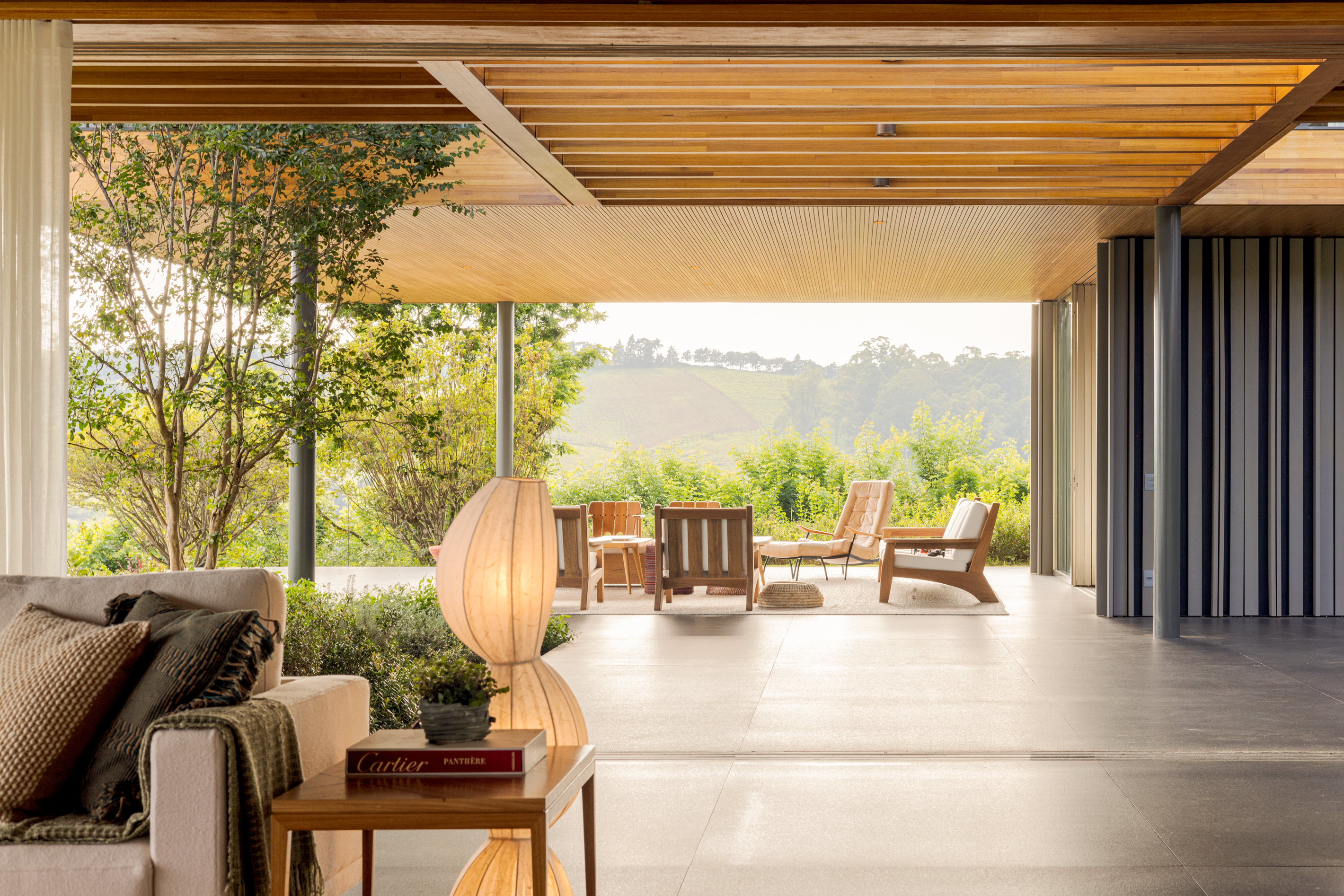

Upon arrival, the impression is of a one-story house, but little by little we can see that it develops itself from top to bottom, with a distribution that took advantage of the slope of the land. From the large entrance hall, it is possible to access the bedroom level, where there are two separate wings: one for the family, with the cantilevered master suite looking at the most privileged view, and another for the guests, more segregated, as if it was a bungalow.
Going down the fully open staircase surrounded by the garden, there is the social area, with integrated living and dining rooms, and a kitchen that can be connected to these spaces as well. A quieter veranda – without a gourmet area – works as an anteroom for the home theater and wine cellar. This social pavilion, that it connected to the sleeping area, intends to be a nighttime area of the project.
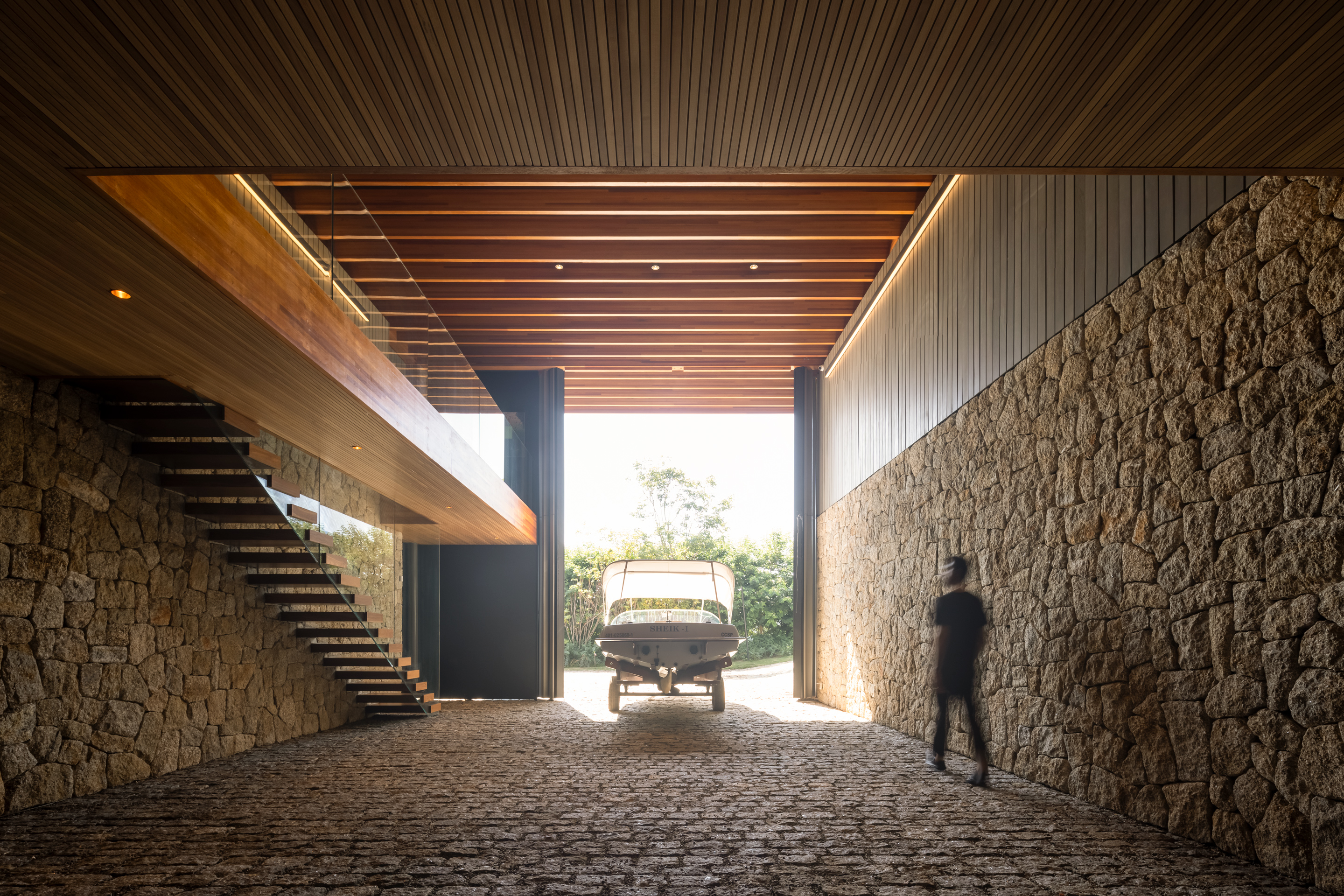
To enjoy the day, we created a pool house in the annex, located at a lower level of the land, following the slope of the lot. With an extensive program of leisure areas, such as a gourmet kitchen with a wood stove, spa and playroom, in addition to the swimming pool, this space was a special requirement made by the clients, who wanted to throw large parties and set up meetings in there.
Another important part of the project was the boat garage. We designed a space exclusively for it, with a ceiling height of 8 m to house the mast. This generous ceiling height was used to accommodate a mezzanine where we placed the owner’s office.
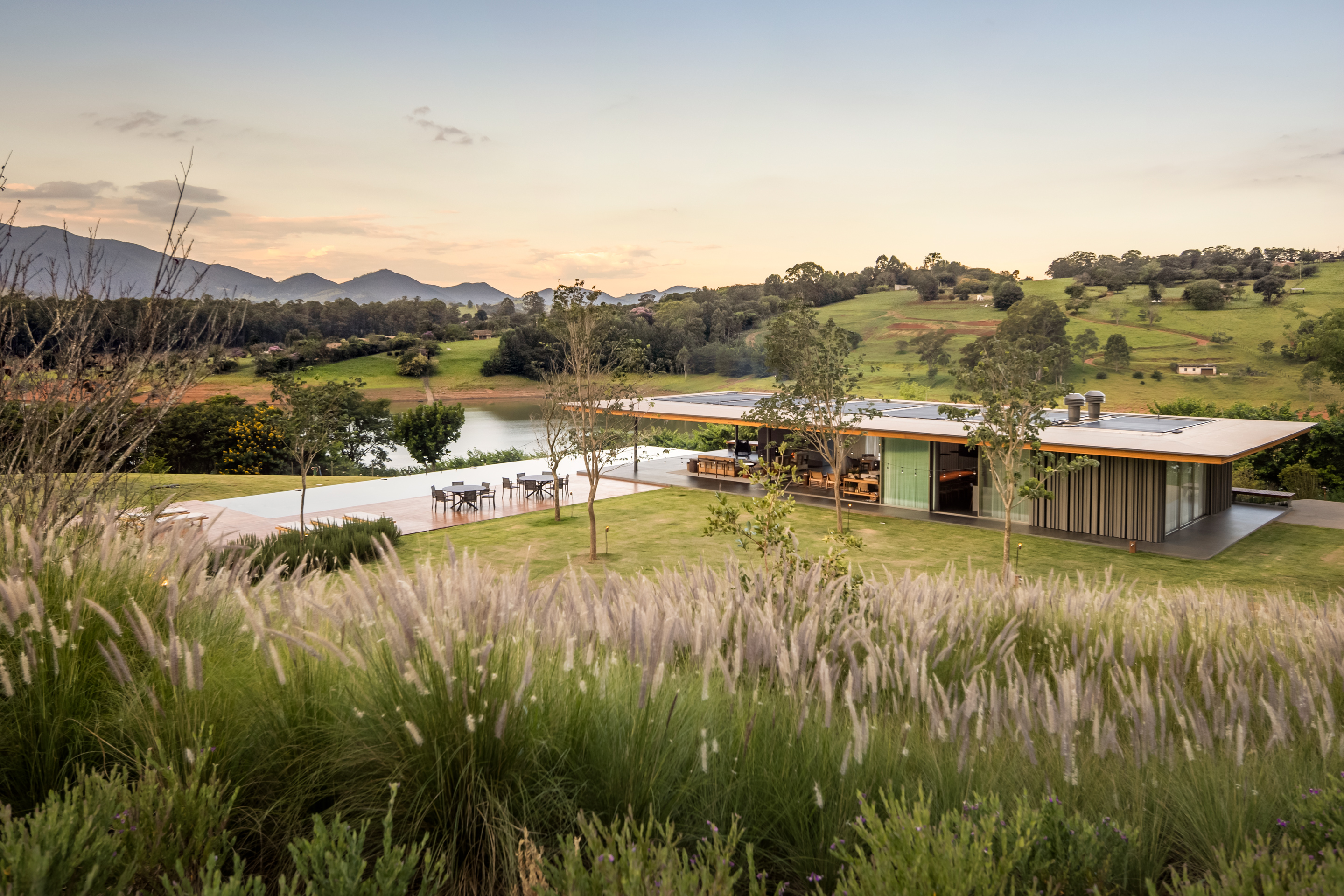
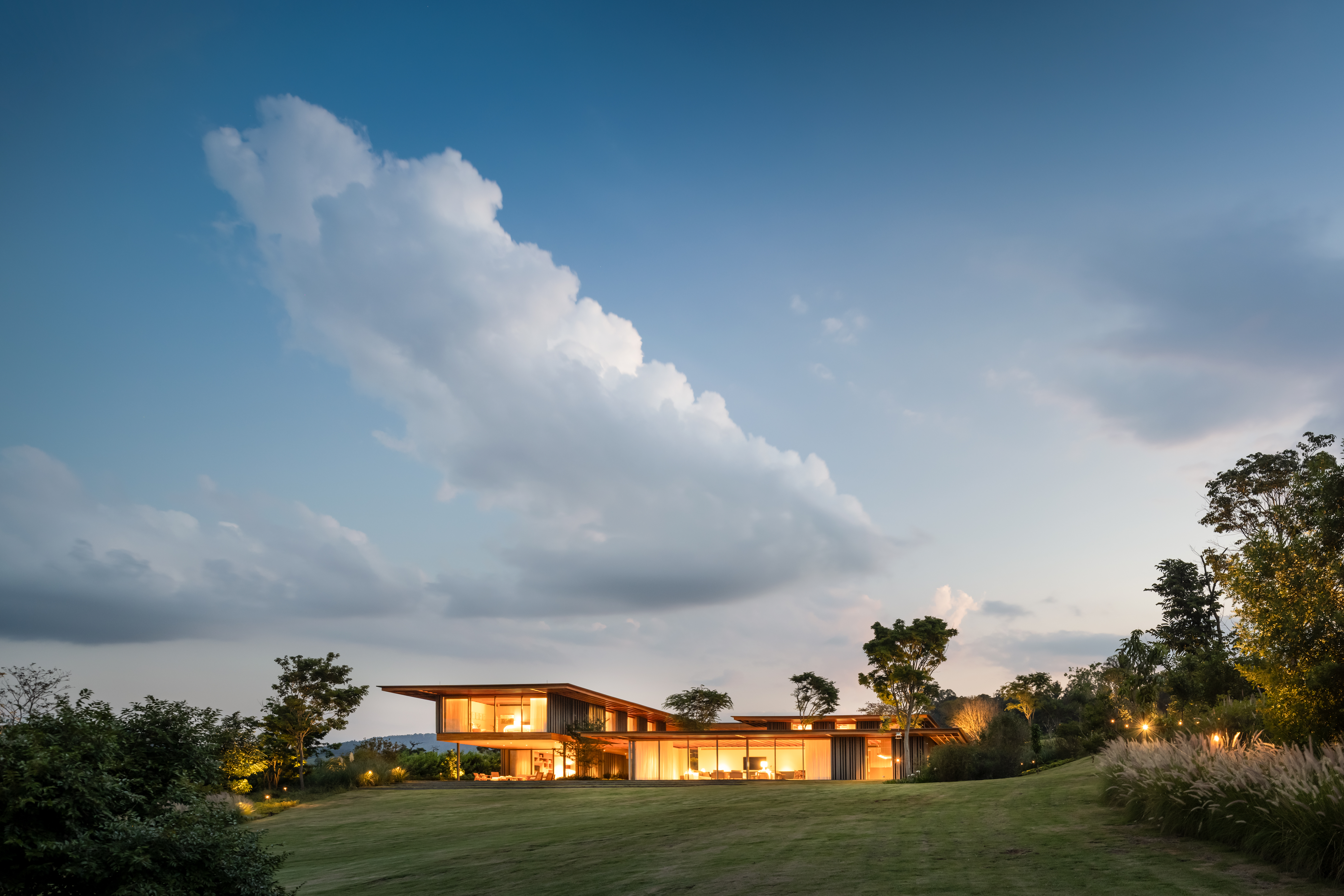
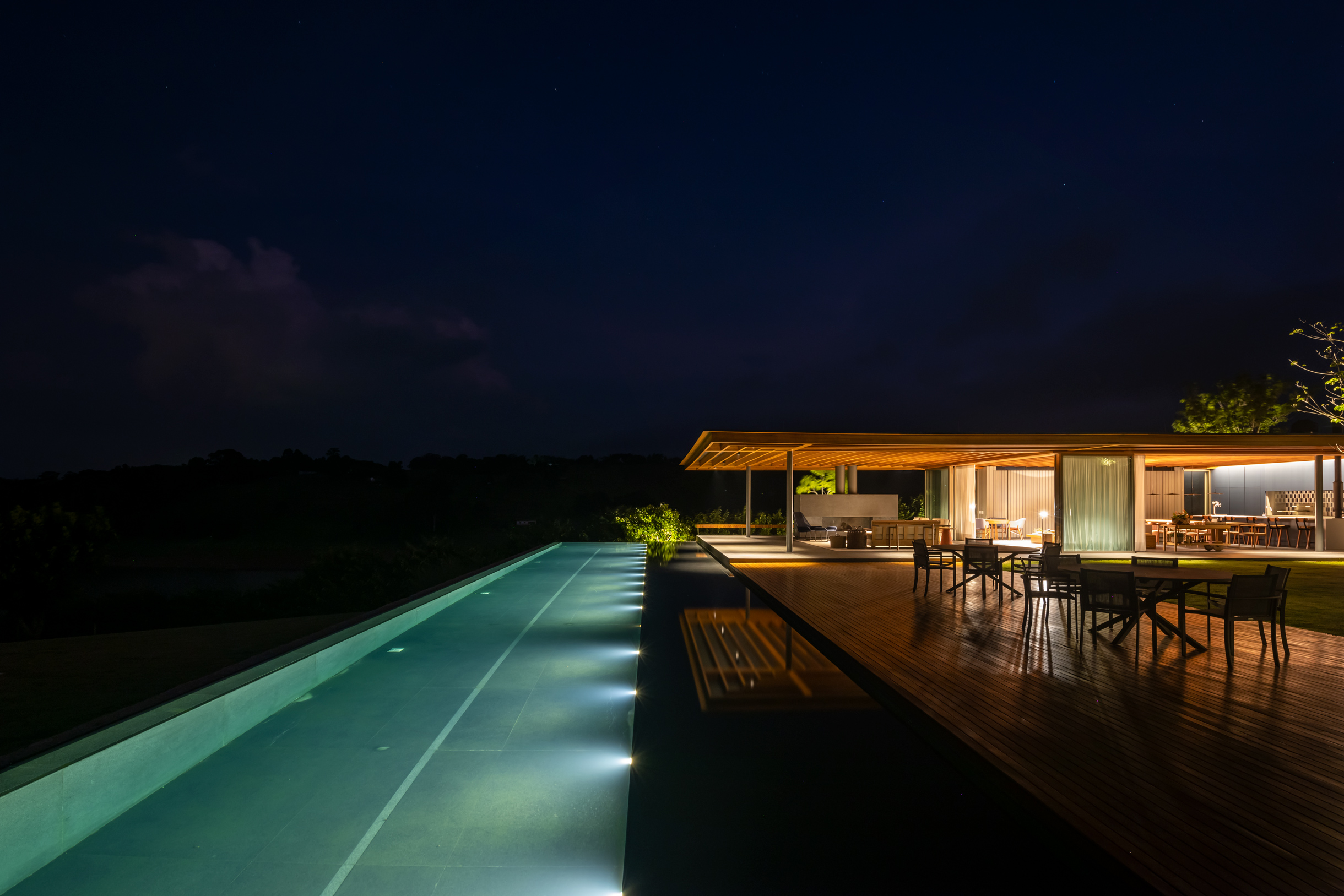
The structure of the pavilions is a mix of concrete and metal elements, and the roof’s structure is in glued laminated timber (Glulam). To ensure the thin thickness of the eaves, they were supported by a beveled Glulam beam to achieve the desired proportion for the house. At some parts, these elements are transformed into pergolas, which provide an effect of light and shade, in addition to serve as a cover for the catwalks.
Unlike other projects, the panels were not positioned in front of the glass, but in between the transparent plans, working as opaque interruptions in the houses’ architecture. They are composed by irregular slats of gray patinated wood, creating a contrast with the wooden surface of the roof, and they are also responsible for providing movement and lightness to the facade.
“I think one of the great challenges of this project was the desire of making a two-story cantilevered house appear to be made entirely of wood, even though it is not”, summarizes Bernardo Jacobsen.
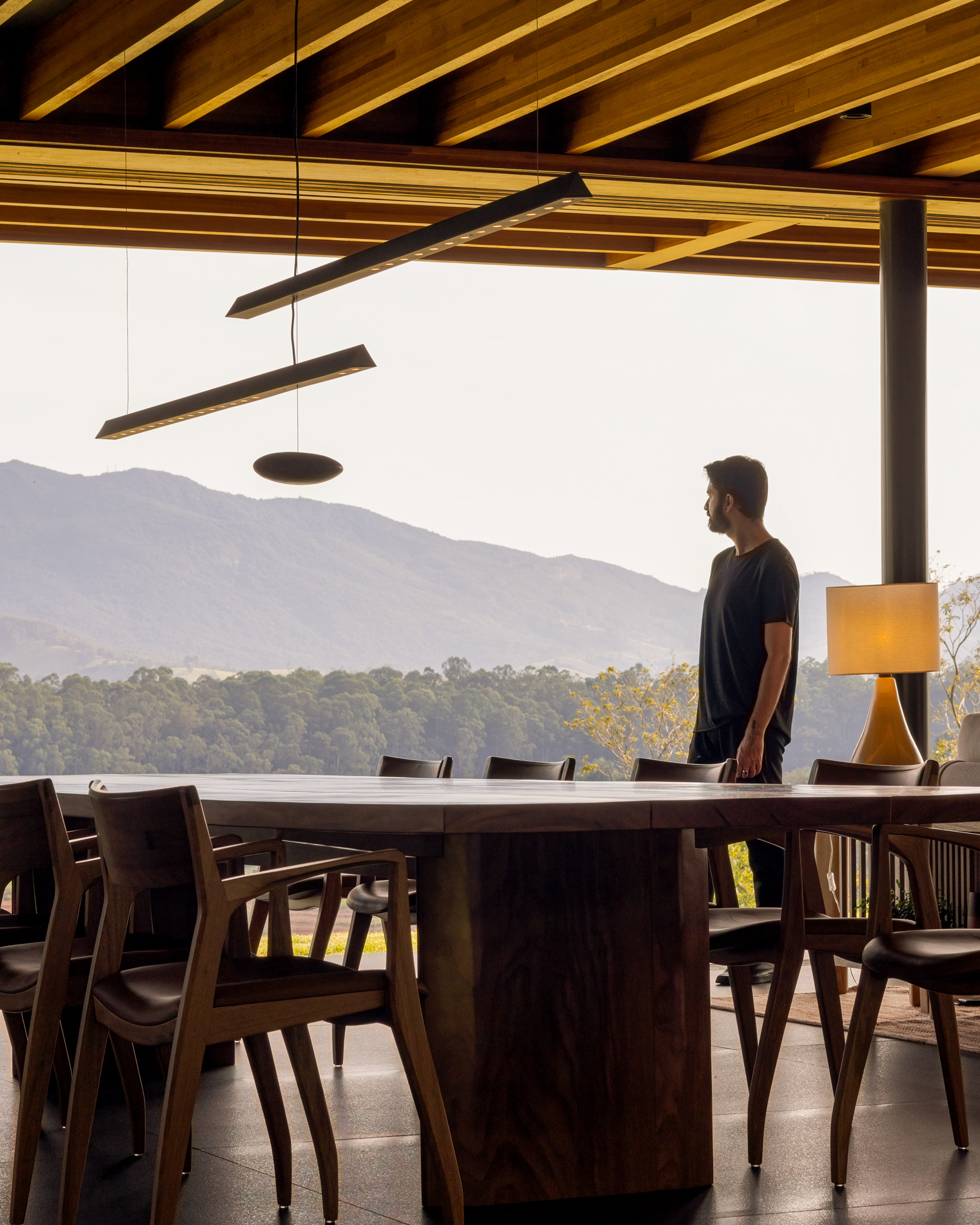
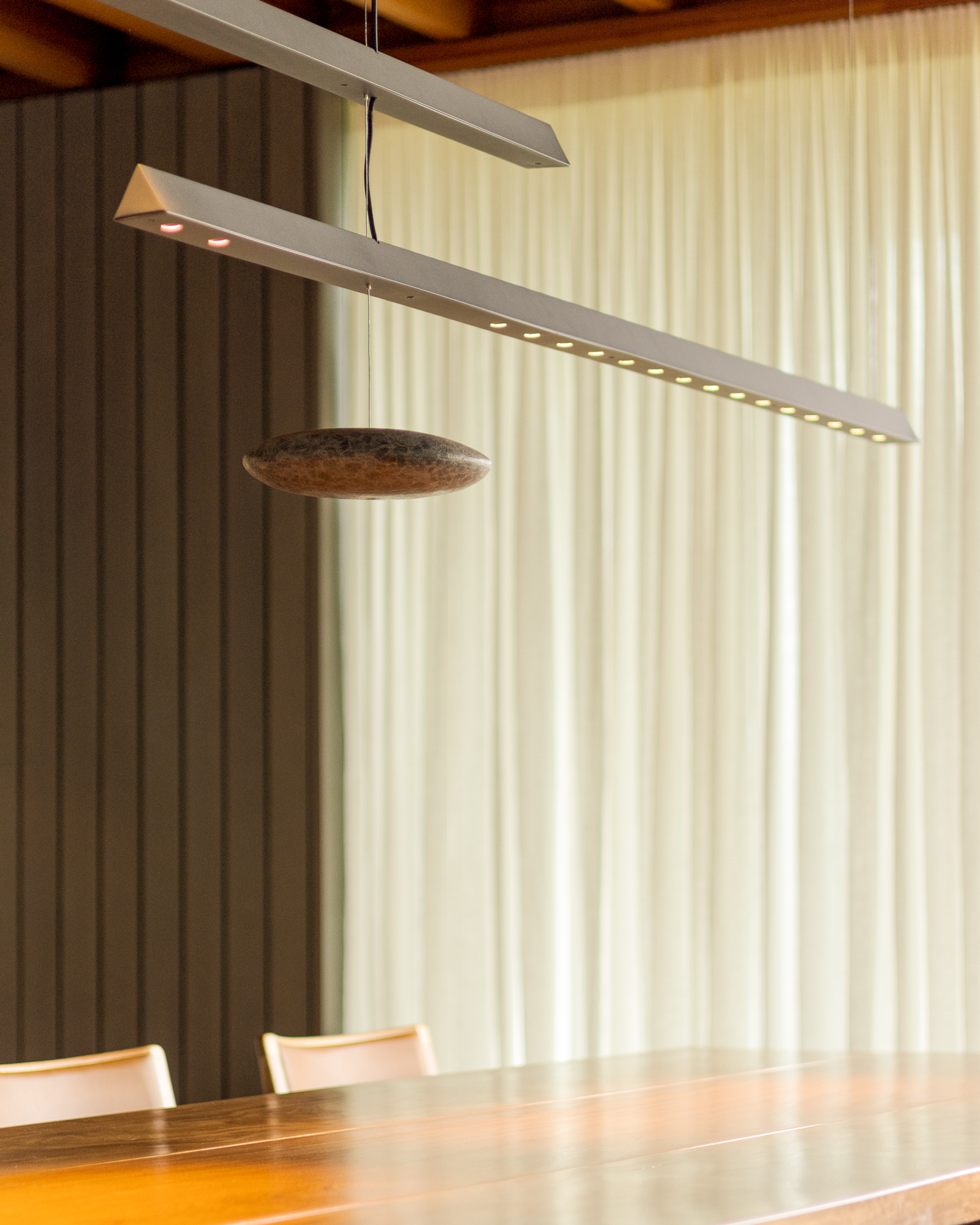
At YJD House we also show the first lamp designed by the office. The two metallic bars with a triangular profile intersect and, in the center, a three-dimensionally molded stone creates a counterpoint to the piece. The continuous lighting, without visible lamps, gives a delicate look to the composition.